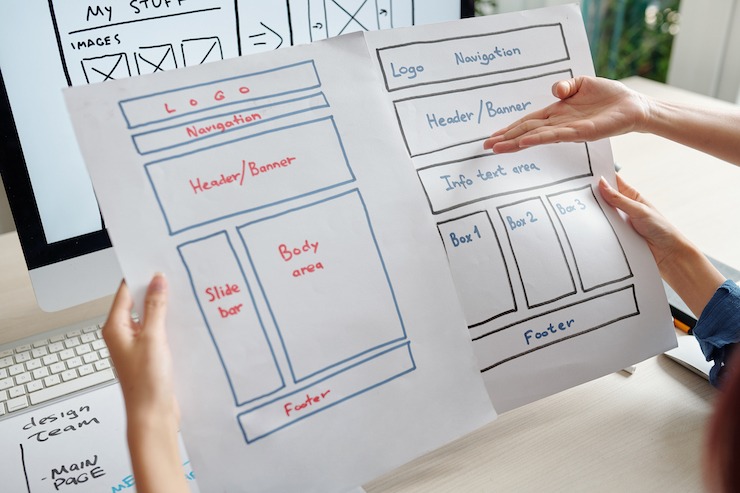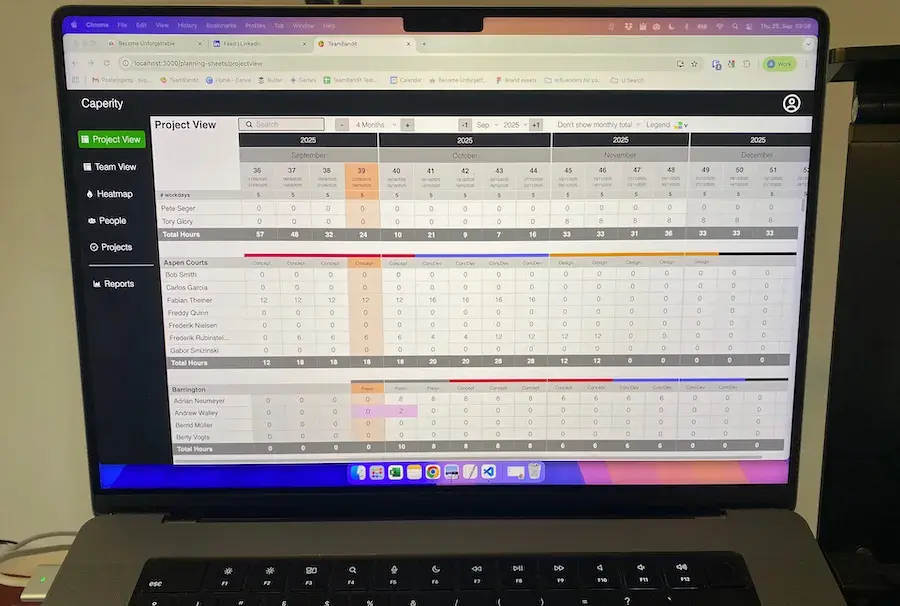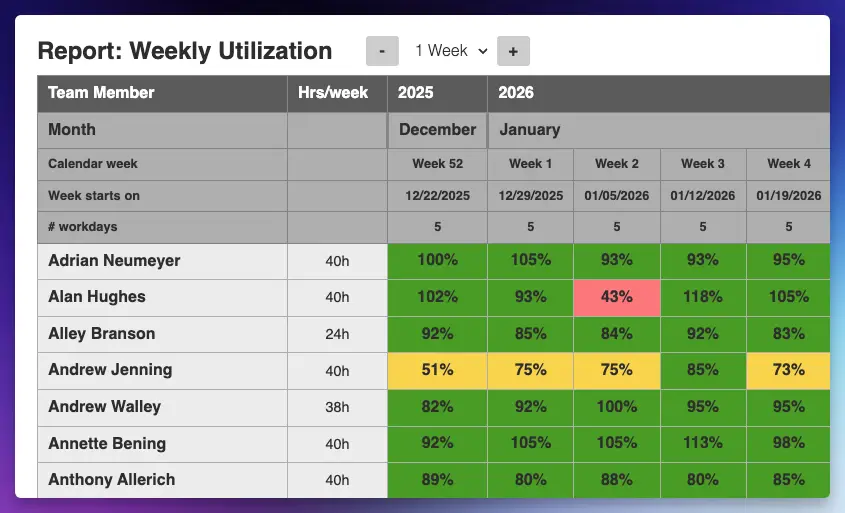Creating or redesigning a website is a project which has stakeholders. Just like any other project. And no matter what type of website you are building, there are a number of stakeholders who will be consistent.
Remember that project stakeholders are those who have an interest in, or concern for, your project’s activities and outputs. Therefore it is crucial that you know who your stakeholders are.
Why is this important?
Knowing your stakeholders allows you to interact with them, involving them in areas of the project they are most concerned with. And even if they don’t have an active role you should keep them updated on the progress.
Keeping stakeholders engaged results in them being supportive of the activities. As you already know, stakeholders who are not regularly updated with progress, changes or any other project concerns may feel that their needs have been disregarded, becoming annoyed and so not fully supporting the project.
This, as I am sure you will agree, is not something you would want, right?
With this article I hope you are able to recognize your website project stakeholders, allowing you to involve them as your project progresses.
The Stakeholders You Need to Involve in Your Website Project
Each stakeholder of your website project will likely be interested in different areas, each with different levels of interest and influence on the overall project.
This is something you and your team should be aware of. So that you are able to inform each stakeholder group with the information relevant for them. For example, some stakeholders may only care about the technical aspect of the website. Therefore, keeping them informed of other areas such as the web content would be a waste of time — both for you and the stakeholder!
Key stakeholders:
- The client
- Website developers (frontend/backend)
- UX (user experience) designers
- Software vendors
- Photographers
- Content writers and copywriters
- IT infrastructure team
- Legal experts
- Unions
- End-users / employees
Stakeholder #1: The Client
The project’s customer is perhaps one of the most obvious stakeholders who often have the most influence and interest in the project and its outputs.
The customer is the most highly interested and influential stakeholder, as they are paying for the services that a digital agency (or whoever is building the website) offers. As a result, you should treat their feedback with priority and make sure they have a positive experience throughout the project.
Customers can be both external or in-house, the difference being that external customers are unconnected businesses seeking the services of an agency in order to have a website built for them. The other type are in-house clients, which are basically other departments within an organization who are either looking for a new website or a redesign of an existing site.
If the customer is an external organisation seeking the expertise of a digital agency, it is likely that they will be represented by the business’ marketing department. They most likely already have an exact vision of their end goal. And due to this it is extremely important that this vision is communicated effectively in order for their needs to be met.
As the customer is funding the project they obviously have a large interest in its outputs and as a result have the most influence over the project, its activities and outputs.
Stakeholder #2: Website Developers
During a website project you will most likely require website developers, as they are the ones who physically create the website.
Within the realm of website development, we can distinguish two types of website developers: frontend and backend developers.
- Frontend developers build the visible aspect of the website, creating and designing the layout and style and putting everything in place to make it look appealing and user friendly.
- Backend developers have the role of designing and implementing the areas of the website which are not seen. In particular the database which stores the website content and the server backend which runs the web server application.
Both types of web developers are equally important as the project’s completion would not be possible without the contribution of either. As stakeholders, website developers are incredibly influential as their input can make or break the project therefore it is important that their requirements are met and they are kept fully informed of all project updates and client needs.
Stakeholder #3: Software Vendors
The creation of a website usually requires the assistance of software vendors. Software vendors provide software to manage the website such as a content management system (CMS), provide components for the website which provide specific functionality such as modules or plugins or provide interfaces between the website and other systems such as order systems if the website is to be used to process sales.
Software vendors have the ability to either positively or negatively impact the project especially in terms of schedule. For example, if they cannot provide the necessary software on-time, the project’s time scale can be impacted, in-turn impacting the project cost and ultimately the project success.
Stakeholder #4: User Experience (UX) Designers

Nowadays it is common to involve user experience experts (UX experts) in web projects. Why? A positive user experience is especially important for websites which act as online shops and process sales. User experience should be prioritized as users who have a negative experience (or who don’t understand how a website is used) are more likely not to make a purchase.
Amazon.com is an example of a website which is optimized for a great user experience due to its simplicity of use which has resulted in unmatched sales success.
Read about How Good User Experience Design Affects Profitability (external)
Many people believe an aesthetically pleasing website is all that is required for a positive user experience. However this is not the case and this is where the skills and knowledge of the user experience experts comes in.

By involving UX designers within your web project, you are going to make your website more user friendly and eventually increase engagement and sales conversions. For this reason, don’t underestimate the importance of this stakeholder as they can greatly influence the success of the end product — the website you are building for the client.
Stakeholder #5: Photographers
A website without pictures is …. not a website! We want to see images of products, people, animals, sceneries or whatever the website is focused around. But where do you get good images?
Sure, stock photo libraries such as iStockPhoto are an option. But if you really want your website to stand out, you need to create custom images that nobody else is using. And how do you do this? You hire a professional photographer.
Photographers often work freelance due to the nature of the work. Therefore it is crucial that you take the extra effort to communicate all relevant information with them as they will often not have the same access to data as other in-house stakeholders may have.
Stakeholder #6: Content & Copy writers
Both content writers and copywriters are important stakeholders within a website project as without them, there would be no information on the site! While content writers create the general content for a website, copywriters specifically create the text (copy) for sales pages.
As both contributors are writing about the business, the website and its offerings it is very important they are kept in-the-loop with all relevant details about the project and the company. After all, they need to know about the business and its products or services to write about them.
When undertaking a website project, it is important that all writers and copywriters are given up-to-date scheduling information so they are aware of when their work is required. When it comes to content creation and copywriting, the work is usually carried out in the following steps. An interview with the client to understand the focus of the business, its philosophy and values, the desired language and tone to be used in the content. The writers will then create a first draft, which is then reviewed by the client. And based on the feedback, writers will revise the content and deliver the final content (don’t expect the first draft to match the client’s wish 100%).
It is common for writers and copywriters to work freelance. Therefore effective communication should be prioritized so they are kept updated as they are not able to see any in-house information due to the nature of their work.
Stakeholder #7: IT Infrastructure Team
Maybe not the most obvious stakeholders in a website project are the IT infrastructure team. Without them there literally could not be a website. The infrastructure team provides the physical hardware, transmission media and software used to interconnect computers and users on the internet including internet servers, web servers, storage, network equipment and infrastructure software.
The team also performs the full technical set-up including the addition of storage and memory which is very important as it ensures a high performance of the website. Website infrastructure specialists are also responsible for monitoring log files to detect errors and setting up email addresses, including the provision of log-in details to the relevant parties.
As stated before, without the IT infrastructure team the setup of a website would not be possible as they are so highly influential to the project’s performance. It is important that their influence is considered within the project and they are effectively communicated with in order to ensure the best project output possible.
Stakeholder #8: Legal Experts
Within most website projects, you will have a requirement for the involvement of legal services because you want to ensure the site is operating within the law.
Legal experts may have to be involved for a number of reasons: For example, for setting the terms of service and creating or reviewing your privacy policy, as well as understanding trademarks and how they apply to the website being created. These aspects are crucial as without the correct legal guidance, the website could quickly find itself in legal trouble.
Legal experts also handle duties such as gaining permission from others to use their work on the site, including providing the correct public credit for all content creators. This is very important as many people still believe that everything on the internet is for the consumption of others to do with as they like. But the correct permission must be granted before using someone else’s content, whether it is images, videos, downloadable content or other materials.
On top of these areas, legal experts are responsible for ensuring that websites are compliant with accessibility standards set by legislation such as the American Disability Act (ADA) or the UK’s Equality Act 2010. Doing so ensures all users are able to access the site as it does not discriminate against any personal requirements.
I think we can agree that legal experts are clearly integral to the success of a website project and informing them of any changes to the project should be prioritized as not doing so could be bad to the project outcome.
Stakeholder #9: Unions
Unions are usually regarded as being a project stakeholder as they have an interest in their relevant organizations, however are not directly impacted by their actions or outputs.
As the project leader of a website project, you need to ensure the project is not working in a way which conflicts with the interests of the union, instead managing them in a way which allows a balance to be achieved.
In order for the project to go ahead as planned, it is likely that the relevant unions have to provide approval so it is important to keep them updated with accurate information otherwise they may refuse approval, delaying the go-live of the website!
Stakeholder #10: Employees
Lastly, you may have to work with end users or employees directly because they will be using the website you are about to build. Working with employees or end users enables you to get feedback on the website’s usability and design. You can also detect technical or usability issues early on before the website is being launched.
If your website project is for a business site, it is often the case that the site includes an employee directory. Employees may therefore be asked to provide photos of themselves and a bio stating who they are and what their function within the business is so it is important you know who your employees are, what they do and how to contact each of them in order to have them provide their information.
Conclusion
Stakeholders will always be present within website projects so it is important to know who they are, what their interests are and how to manage them in order to ensure they impact the project in a positive rather than negative way. Each project’s stakeholders will differ slightly, with each having a different level of interest and influence on the project. By ensuring each stakeholder is monitored it allows these levels to be assessed regularly for changes. By considering each stakeholder’s requirements while seeking to find a balance between the interests of all parties, it is more likely that a positive outcome will be reached.
Author
-
Hi, I’m Adrian, a Senior Project Manager and the Creator of Tactical Project Manager, where I teach a pragmatic approach to project management. Led large-scale IT and business projects for over 10 years. My goal is to enable you to lead any project with confidence.
View all posts


